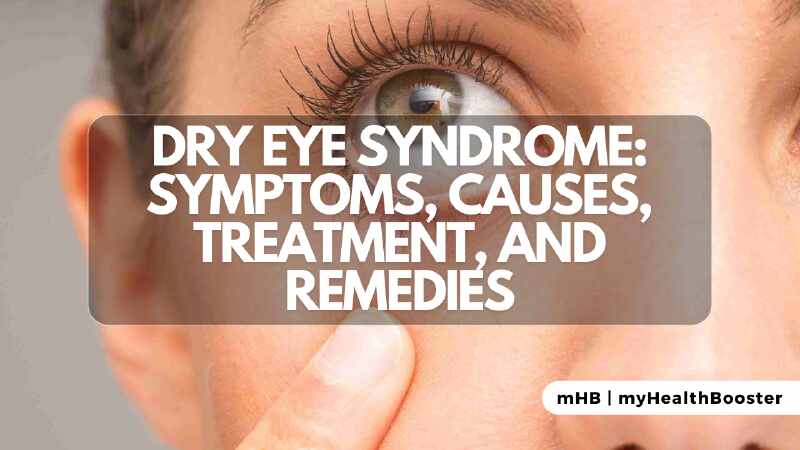Dry eye syndrome is a prevalent and generally harmless condition characterized by an imbalance in the tear film, leading to various symptoms that can impact daily life. This condition arises when the eyes fail to produce enough tears, or when the quality of tears is compromised, resulting in discomfort, irritation, and inflammation.
Layers of the Tear Film
To maintain comfortable vision, the eyes rely on a delicate film of tears consisting of three layers. The innermost layer, composed of mucin, helps the watery layer spread evenly. The aqueous layer, the thickest, moisturizes the eyes and flushes out foreign particles. The outermost layer, made of lipids, prevents excessive evaporation of the watery layer.
Causes of Dry Eye Syndrome
Dry eye syndrome stems from decreased tear production, increased tear evaporation, or abnormalities in mucin or lipid production. Aqueous tear deficiency, often the primary cause, results from poor watery tear production or increased evaporation.
Risk Factors
Factors such as age, gender (more common in women), and ethnicity increase the likelihood of developing dry eye syndrome. Menopause, environmental conditions, certain diseases, contact lens use, and prolonged screen time also contribute to the risk.
Symptoms of Dry Eye Syndrome
Dry eye symptoms include sensations of dryness, grittiness, burning, redness, blurred vision, and excessive tearing. These symptoms may worsen in dry climates, with prolonged use of the eyes, or in certain medical conditions.
Diagnosis by Healthcare Professionals
Healthcare professionals can diagnose dry eye syndrome through a comprehensive eye examination, evaluating tear film stability, checking for inflammation, and assessing the health of various eye structures. Special dyes and tests measuring tear production and osmolarity may be employed.
Over-the-Counter Treatments
While there is no cure for dry eye syndrome, over-the-counter lubricating eye drops, often known as artificial tears, can provide relief. Prescription medications, such as eye lubricants, cyclosporine, lifitegrast, and corticosteroid drops, may be recommended for more severe cases.
Surgical and Other Therapies
Surgical interventions, like punctal occlusion or thermal pulsation therapy, can help manage dry eye symptoms. Self-care measures, such as using a humidifier, avoiding excessive air movement, and taking omega-3 fatty acid supplements, contribute to overall relief.
Prognosis and Complications
Dry eye syndrome, while symptomatic, rarely causes significant vision loss. Most cases are treatable with artificial tears. Severe cases may lead to an increased risk of infections and, in rare instances, corneal damage.
Prevention and Self-Care
Preventing dry eye involves addressing environmental causes, taking breaks during visually intensive activities, and considering omega-3 fatty acid supplementation. Self-care measures, including warm compresses, artificial tears, and blink reminders, can alleviate symptoms and improve overall eye health.
Understanding dry eye syndrome empowers individuals to manage symptoms effectively, ensuring optimal eye health and overall well-being. If symptoms persist or worsen, seeking professional advice is crucial for appropriate diagnosis and treatment.
